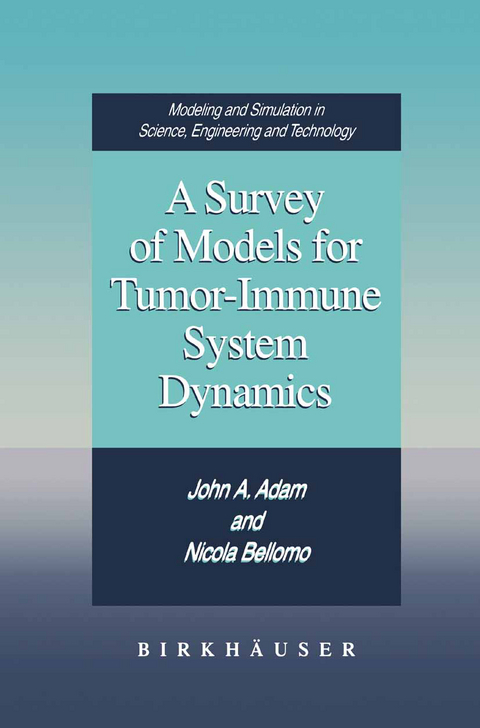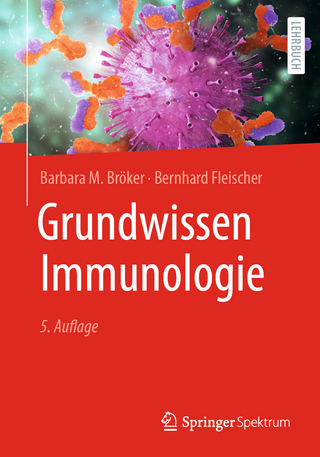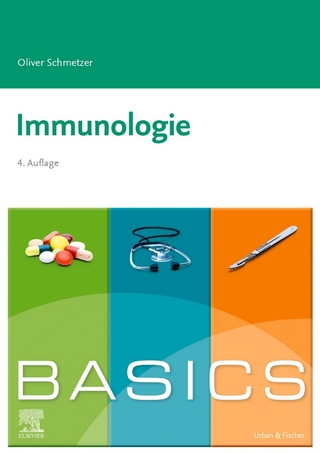
A Survey of Models for Tumor-Immune System Dynamics
Birkhauser Boston Inc (Verlag)
978-0-8176-3901-3 (ISBN)
1. A Brief History of Immunologic Thinking: Is it Time for Yin and Yang?.- 1.1 Koch’s Postulates.- 1.2 Aristotle’s Laws of Logical Argument.- 1.3 Antigens and T-Cell Responses.- 1.4 Thinking About the Immune System.- 1.5 Fuzzy T-Cell Model.- 1.6 Acknowledgment.- 2. General Aspects of Modeling Tumor Growth and Immune Response.- 2.1 Introduction.- 2.2 What is a Mathematical Model?.- 2.3 Introduction to Deterministic Tumor (or Spheroid) Growth Models.- 2.4 A Predator-Prey Approach.- 2.5 A Model of Tumor Cell/Immune System Interaction.- 2.6 Models, Metaphors and Similes: Some Alternative Paradigms.- 2.7 References.- 2.8 Appendices.- 3. Mathematical Modeling of Tumor Growth Kinetics.- 3.1 Introduction.- 3.2 Tumor Growth as a Dynamical System.- 3.3 The Gompertz Model.- 3.4 The Logistic Model.- 3.5 Models of von Bertalanffy.- 3.6 Tumor Growth Modeled by Specific Mechanisms.- 3.7 Mathematical Models and Measured Growth Curves.- 3.8 Concluding Outlooks.- 3.9 Acknowledgment.- 3.10 References.- 4. Tumor Immune System Interactions: The Kinetic Cellular Theory.- 4.1 Introduction.- 4.2 A Concise Guide to the Literature.- 4.3 Guidelines: From Observation to Simulation.- 4.4 Cell Population and Activity.- 4.5 Modeling Cell Interactions.- 4.6 Evolution Kinetic Equations.- 4.7 Experimental Activity.- 4.8 Simulation and Validation Problems.- 4.9 Remarks Addressed to Applied Mathematicians.- 4.10 Perspectives.- 4.11 References.- 5. From Mutation to Metastasis: The Mathematical Modelling of the Stages of Tumour Development.- 5.1 Introduction.- 5.2 Avascular Tumour Growth: The Multicell Spheroid Model.- 5.3 Thmour Angiogenesis. Capillary Sprout Formation and Growth.- 5.4 Vascular Tumour Growth.- 5.5 Discussion and Conclusions.- 5.6 References.- 6. Basic Models of Tumor-Immune SystemInteractions Identification, Analysis and Predictions.- 6.1 Introduction.- 6.2 Kinetics Models of Cellular Cytotoxic Reactions at the Effector Stage of Immune Response.- 6.3 Regulatory Cells at the Effector Stage of the Cellular Immune Response.- 6.4 Modeling of the Recognition Mechanisms of Thmor Cells by NK-like Cells.- 6.5 Switch of Cytolytic Mechanisms: Effector Cells, Target Cells and Bispecific Regulating Molecules.- 6.6 Propagation and Interaction of Tumor Specific Macromolecules in Multicellular Tumors.- 6.7 Conclusion.- 6.8 Acknowledgment.- 6.9 References.- 7. Tumor Heterogeneity and Growth Control.- 7.1 Introduction.- 7.2 The Goal.- 7.3 The Plan.- 7.4 The Foundation and Tools.- 7.5 The Structure.- 7.6 Conclusions.- 7.7 References.- 8. Biological Glossary.
| Reihe/Serie | Modeling and Simulation in Science, Engineering and Technology |
|---|---|
| Zusatzinfo | XVI, 344 p. |
| Verlagsort | Secaucus |
| Sprache | englisch |
| Maße | 155 x 235 mm |
| Themenwelt | Mathematik / Informatik ► Mathematik ► Allgemeines / Lexika |
| Mathematik / Informatik ► Mathematik ► Angewandte Mathematik | |
| Studium ► Querschnittsbereiche ► Infektiologie / Immunologie | |
| ISBN-10 | 0-8176-3901-2 / 0817639012 |
| ISBN-13 | 978-0-8176-3901-3 / 9780817639013 |
| Zustand | Neuware |
| Haben Sie eine Frage zum Produkt? |
aus dem Bereich


